China is one of the world’s four ancient civilizations and the only enduring civilization that has continuously developed from the early Xia, Shang, and Zhou dynasties to the present day. How long is Chinese history? There are many perspectives to this question depending on different starting points. The fossils of Yuanmou Man discovered in Yunnan, dating back about 1.7 million years ago, are the earliest known primitive humans in China. From the Xia Dynasty, the first state system in China, the history of China is about 4,100 years. And, from the Shang Dynasty, the time when the oldest Chinese characters were founded, the recorded history of China is about 3,600 years.
Throughout the extensive history of China, many dynasties have risen and fallen. Each of these dynasties and periods contributed to its distinct achievements and profoundly influenced both China and the world.
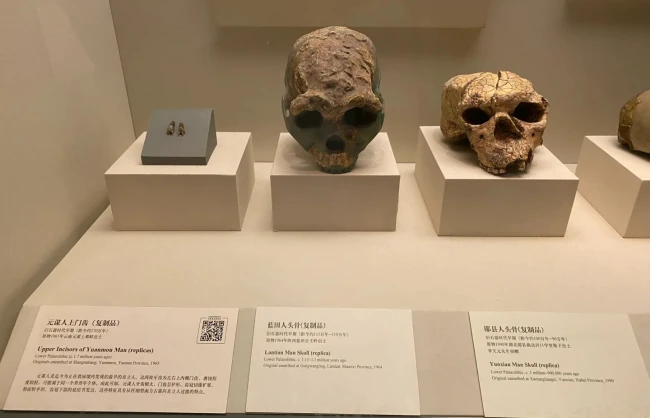
Chinese History Timeline
Below is a timeline of major Chinese dynasties and significant periods.
| Dynasty | Duration (Years) | Capital(s) | Brief Introduction |
| Xia Dynasty | c. 2070 BCE – 1600 BCE | Yangcheng (Henan Dengfeng), Anyi (Shanxi Xia County), etc. | The first recorded slave society in Chinese history |
| Shang Dynasty | c. 1600 BCE – 1046 BCE | Bo (Henan Shangqiu), Yin (Henan Anyang), etc. | The second dynasty in Chinese history and the first with written records. |
| Western Zhou | c. 1046 BCE – 771 BCE | Haojing (Shaanxi Xi’an) | Established important systems such as the Rites and Music system and Patriarchal system. |
| Eastern Zhou (Spring and Autumn, Warring States) | 770 BCE – 256 BCE | Luoyi (Henan Luoyang) | Divided into the Spring and Autumn and Warring States periods; Various schools of thought and philosophical traditions emerged, including Confucianism, Taoism, Mohism, and Legalism. |
| Qin Dynasty | 221 BCE – 206 BCE | Xianyang in Shaanxi | The first unified, multi-ethnic, autocratic centralized state in the history of China. |
| Western Han | 202 BCE – 8 CE | Chang’an (now Xi’an, Shaanxi) | The Silk Road was established; “Records of the Grand Historian” (Shiji) compiled; invented papermaking. |
| Eastern Han | 25 CE – 220 CE | Luoyang | Buddhism was introduced to China through the White Horse Temple; Ban Chao successfully restored control over the Western Regions, strengthening exchanges between the East and West. |
| Wei, Jin, Northern and Southern Dynasties | 220 CE – 581 CE | Luoyang, Chengdu, and Jianye (Now Jiangsu Nanjing) | Include four periods: the Three Kingdoms, the Wester Jin Dynasty, the Eastern Jin Dynasty, and Southern and Northern Dynasties; featuring frequent changes in regimes. |
| Sui Dynasty | 581 CE – 618 CE | Daxing (Shaanxi Xi’an) | Established the imperial examination system, a method for selecting government officials existing for over 1,300 years. |
| Tang Dynasty | 618 CE – 907 CE | Chang’an (now Shaanxi Xi’an), Luoyang | One of the most prosperous and open dynasties in China’s history; Vibrant exchanges between China and foreign countries through the Silk Road. |
| Five Dynasties and Ten Kingdoms | 907 CE – 979 CE | Kaifeng, Chengdu, etc. | A turbulent yet vibrant era in China history; saw increased ethnic integration, and remarkable achievements in poetry, painting, and calligraphy. |
| Northern Song | 960 CE – 1127 CE | Dongjing (now Kaifeng, Henan) | Experienced economic prosperity and cultural flourishing. Was the richest country in the world. |
| Southern Song | 1127 CE – 1279 CE | Lin’an (now Hangzhou) | Saw prosperous economy and culture, advanced technology, and flourishing literature. But was militarily weak. |
| Liao Dynasty | 916 CE – 1125 CE | Linhuang (Inner Mongolia Balinzuo Banner), etc. | Coexisted with the Northern Song and Western Xia. Its territory encompassed present-day northeastern China and Mongolia |
| Western Xia | 1038 CE – 1227 CE | Xingqingfu (Ningxia Yinchuan) | Coexisted with the Song, Liao, and Jin Dynasties, with its territory mainly in present-day Ningxia, Gansu, Qinghai, Inner Mongolia, and parts of Shaanxi. |
| Jin Dynasty | 1115 CE – 1234 CE | Huiningfu (Heilongjiang Acheng), Zhongdu (Beijing), etc. | Overthrew the Liao and Northern Song Dynasties and coexisted with the Southern Song. |
| Yuan Dynasty | 1271 CE – 1368 CE | Dadu (Beijing) | The first unified dynasty in Chinese history established by a minority ethnic group. |
| Ming Dynasty | 1368 CE – 1644 CE | Nanjing, Beijing | Left rich cultural heritage and architectural marvels, such as the Forbidden City, and most Great Walls today. |
| Qing Dynasty | 1644 CE – 1912 CE | Shengjing (Liaoning Shenyang), Beijing | The last feudal dynasty in China |
| Republic of China | 1912 CE – 1949 CE | Nanjing | |
| People’s Republic of China | 1949 CE – present | Beijing |
Overview of Major China Dynasties in Order
The oracle bone script from the Shang Dynasty, the earliest Chinese written records ever found, had recorded events as far back as the Xia Dynasty. According to modern archaeological discoveries, primitive humans had lived continuously in China for around 2 million years, far predating the Xia Dynasty. For example, the Yuanmou Man discovered in Yunnan can date back about 1.7 million years. Other discoveries include the Lantian Man from around 1.15 million years ago, the Peking Man from 300,000 to 400,000 years ago, and the Upper Cave Man from about 30,000 years ago.
Xia Dynasty (c. 2070-1600 BEC )
Xia is the first dynasty in the history of Chinese civilization. Also, it is the first hereditary clan-based feudal dynasty, marking the transition from a primitive society to a slave society.
The main living area for the Xia Dynasty was around the middle and lower reaches of the Yellow River, corresponding to present-day Shanxi, Henan, and Hebei regions.
Agriculture was the most important economic activity during this period. And bronze artifacts had appeared.
Shang Dynasty (c. 1600-1646 BEC)
Oracle Bone Script, the earliest systematic Chinese script, was created in this period. The Shang Dynasty was thus the first dynasty with records in Chinese history.
A comprehensive trade system and currency emerged.
The bronze smelting technology came to a peak, with many exquisite bronze artifacts being discovered, such as the famous Simuwu Ding, and Four Rams Square Zun.
Zhou Dynasty (1046-256 BEC)
The Zhou Dynasty can be divided into the Western Zhou (1046-771 BEC) and Eastern Zhou (770-256 BEC).
The feudal system was implemented in the early Zhou period.
Detailed ceremonial norms and musical systems were established to help maintain social order and moral standards.
Various philosophical schools emerged in this period, including Confucianism, Daoism, Legalism, and Mohism.
The Eastern Zhou can be divided into the Spring and Autumn Period and the Warring States Period. This period saw constant warfare and frequent conflicts between major feudal lords.
Qin Dynasty (221-206 BEC)
The Qin Dynasty unified the six warring states and finally established the first centralized feudal dynasty in Chinese history.
Qin Shi Huang pioneered the imperial system in China, and proclaimed himself as the first emperor of China.
The legal system, currency, measurement system, and writing system were all unified and standardized in Qin Dynasty.
Qin Shi Huang ordered the construction of the Great Wall to defend against nomadic invasions.
Recommended China tours to glimplse into the Qin Dynasty:
- Xian Terracotta Warriors and Horses Discovery Day Tour
- Xian Group Day Tour: Terracotta Warriors and Banpo Museum
- Half-Day Xian Terracotta Warriors Tour with Airport Transfer
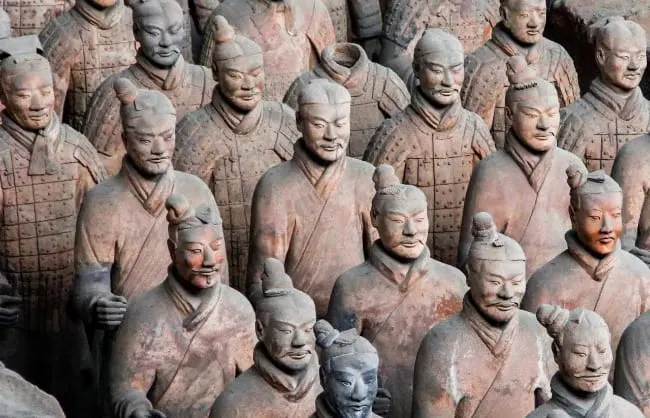
Han Dynasty (202 BCE – 8 CE)
- The Han Dynasty was divided into the Western Han Dynasty (202 BCE – 8 CE) and the Eastern Han Dynasty (25 – 220 CE).
- Being contemporaneous with the Roman Empire in Europe, the Western Han Dynasty was one of the most powerful empires at that time.
- Paper-making technique, one of the Four Great Inventions in ancient China, was invented and developed in the Han Dynasty.
- The Silk Road was first established during the Western Han Dynasty to strengthen trade and cultural exchanges between East and West.
- Buddhism was introduced to China during this period. White Horse Temple, the earliest Buddhist temple in China, was established in Luoyang.
- Records of the Grand Historian (Shiji) was compiled in this period, which recorded over 3,000 years of history before the Emperor Wu of Han.
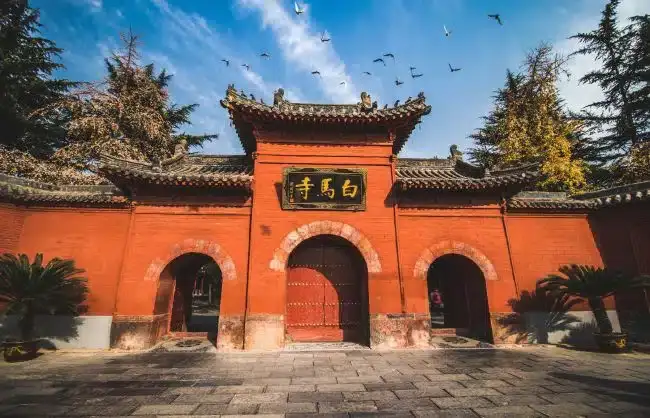
Wei, Jin, Northern and Southern Dynasties (220 CE – 581 CE)
- These nearly 400 years saw frequent changes in regimes and warfare. After the chaos at the end of the Eastern Han Dynasty, the rise of Three kingdoms formed. Then, followed a brief unification under the Western Jin, the prolonged division between the Eastern Jin and the Sixteen Kingdoms, and Southern and Northern Dynasties continued.
- Though the frequent regime changes, ethnic integration and diverse remarkable cultural developement were accelerated.
- Buddhism and Taoism flourished in this period. To promote Buddhism, many grottoes were constructed, including the Yungang Grottoes in Datong, and Longmen Grottoes in Luoyang.
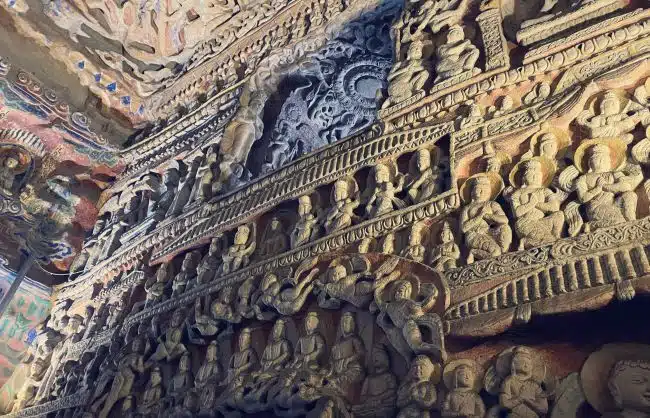
Sui Dynasty (581 – 618 CE)
- Though existed only 37 years, Sui Dynasty ended nearly 400 years of fragmentation, and laid the foundation for the flourishing of the Tang Dynasty.
- The Beijing-Hangzhou Grand Canal was constructed.
- The imperial examination system was established and adopted by the following dynasties for over 1000 years.
Tang Dynasty (618 – 907 CE)
- The Tang Dynasty is widely recognized as one of the most prosperous and powerful dynasties in the history of China.
- The culture was extremely open and diverse in this period, seeing remarkable achievements in poetry, calligraphy, painting, and music. The murals of the Mogao Grottoes and the Tang Sancai pottery are all testaments.
- Tang Dynasty saw the first and the only female emperor in the history of China, Wu Zetian.
- Confucianism, Buddhism, and Daoism coexisted and flourished in this period.
- Significant technological advancements in this period include woodblock printing and gunpowder.
- Cultural exchanges with neighboring countries are frequent. Korea and Japan sent numerous students to study in Chang’an and Luoyang at that time.
Five Dynasties and Ten Kingdoms (907 – 979 CE)
- This is another period of significant change and turmoil, featuring five short-lived dynasties in North China and the emergence of ten independent regimes in south China and border regions.
- Despite the constant warfare, this period saw notable development in porcelain making and woodblock printing. The relative stability of the southern region saw more technological progress.
Song Dynasty (960 – 1279 CE)
- The Song Dynasty was at the same time as the Middle Ages in Europe. It stood as the most prosperous nation in the world at that time and is recognized as the most economically and culturally flourishing era in the history of ancient China.
- Was divided into North Song (960 – 1127 CE) and South Song (1127 – 1279 CE), with Kaifeng and Hangzhou as capitals separately.
- Despite the economic and cultural prosperity, the Song Dynasty faced consistent military challenges from neighboring Liao, Jin, and Western Xia States.
- The production and export of goods such as porcelain, silk, and tea reached unprecedented scales.
- Literature and art witnessed remarkable achievements.
- Movable type printing, compass, and gunpowder weapons were further developed and improved in this period.
- Jiaozi, the earliest paper currency in the world was created.
Yuan Dynasty (1271 – 1368 CE)
- Founded by the Mongols, the Yuan Dynasty was the first unified feudal dynasty led by a minority ethnic group in Chinese history.
- The territory of the Yuan Dynasty far exceeded any of the previous dynasties, laying the foundation for the modern territorial boundaries of China.
- Its inclusive policies contributed to the cultural and religious diversities within the empire.
- Chinese opera came into a golden age in this period, leaving an enduring legacy in Chinese culture.
Ming Dynasty (1368 – 1644 CE)
- The Ming Dynasty was the last unified dynasty led by Han people in Chinese history.
- Emperor Yongle, the third emperor of the Ming Dynasty moved the capital from Nanjing to Beijing. Then, extensive construction was undertaken. The Forbidden City is the most outstanding one, serving as the residence of the royal family.
- This period also saw notable progress in navigation and shipbuilding. During the Yongle reign, Zheng He once led seven maritime expeditions to various parts of the world, showcasing the advanced navigation techniques and map-making at that time.
- Most Great Walls we see today were built or reconstructed during the Ming Dynasty.
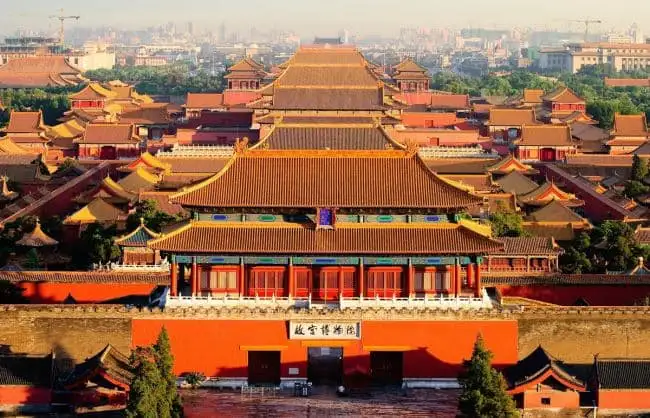
Qing Dynasty (1644 – 1912 CE)
- During the prosperous reigns of early emperors, the territorial expansion laid the foundation for modern China’s borders.
- Due to its “Single Port Commerce” policy, the country was isolated from the rest of the world, and unable to keep up technologically.
- The First Opium War marked the beginning of China’s semi-colonial and semi-feudal status. And the following Second Opium War and Sina-Japanese War further entrenched its semi-colonial status.
Republic of China (1912 – 1949 CE)
The Republic of China was the earliest democratic republic in Asia. This turbulent period was characterized by political reforms, warlord conflicts, the War of Resistance against Japan, and the Chinese Civil War. It was the era when China transformed from a feudal imperial system to a democratic republic.
People’s Republic of China 1949 CE – present
The establishment of the People’s Republic of China achieved national unity among all ethnic groups. Since its founding, China has achieved remarkable development and progress on scientific and technological innovation, infrastructure, openness to the outside world, and people’s living standards.
Interesting Facts of History of China
- The tomb of Qin Shi Huang, the first emperor of China, covers an area of 38 square miles and is still not opened today. The tomb is said to contain rivers of mercury. The famous Terracotta Armyis just one of the hundreds of burial pits of the tomb.
- In the Yuan Dynasty, Tibet was fully incorporated into the territory of China for the first time.
- Chopsticks have a history of about 3,000 years in China and were initially served as cooking utensils.
- China was the first country to use paper money in the world. The emergence of paper currency can be traced back to 1023 during the Northern Song Dynasty.
- In ancient China, dragon and phoenix are symbols of good fortune. The dragon symbolizes male power, and emperors are often referred to as “descendants of the dragon”. The phoenix is the symbol of female strength and beauty.
FAQs of Chinese History
What dynasty built the Great Wall of China?
The construction of Great Wall can be traced back to the Spring and Autumn period. Some feudal lords constructed the extensive walls to defend against neighboring invasions at that time. Then, in the Qin Dynasty, these existing walls were connected to form the Great Wall we know today, separating the north from the south. In subsequent dynasties, the Great Walls were continuously repaired and expanded. The Ming Dynasty was the last peak period of Great Wall construction.
How many dynasties in the history of China?
The answer varies based on different perspectives. If only considering the unified dynasties, there are 18 major dynasties. The number may rise to 24 if split the Song Dynasty into Northern Song and Southern Song, and include some short-lived regimes. If we include both major dynasties and smaller local regimes, there are a total of 83 dynasties.
What is the longest lasting dynasty in China’s history?
The Zhou Dynasty, including Western Zhou and Eastern Zhou, was the longest-lasting dynasty in the history of China. Spanning from about 1046 BCE to 256 BCE, it lasted around 791 years, encompassing 37 kings.
Explore the History of China with Us
Traveling to ancient capitals of China is a great choice to vividly experience the history of ancient China. In Xian, Beijing, Luoyang, and Hangzhou, many ancient architecture, historical relics and cultural sites are still well preserved to show visitors their glorious past. Below are some hand-picked China tours for history buffs. You can also contact us to customize your perfect China history discovery tour.









